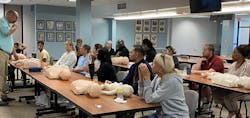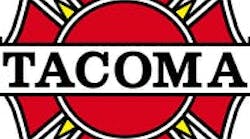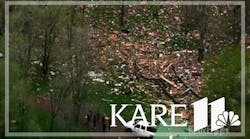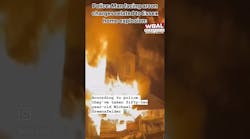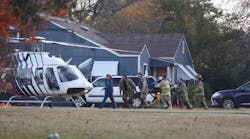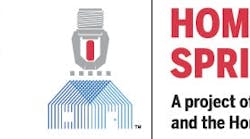The approach to community risk reduction (CRR) must be a holistic one. It isn’t just about an individual program, such as smoke alarms or slips and falls. It’s about how all of a community’s risks come together into one comprehensive approach that involves the whole community and reducing those risks before data tell you to do so. This, thereby, better prepares citizens and increases a community’s overall resiliency.
Being proactive
Two facts remain consistent in the emergency services world.
First, there is no such thing as an accident. Someone did something that they didn’t need to do or failed to do something that they needed to, which resulted in damages, injuries and/or death, which often became worse because of the lack of response, or proper response, by the victims or bystanders. All of these are behavioral issues that produce or increase risk and can be addressed through CRR.
Second, when responders arrive, it’s either too late or seconds from becoming too late. When a firefighter rescues someone from a burning building, a member doesn’t just walk in and stroll out with the victim. The firefighter rushes in and dashes out, with flames licking at boot heels. The same applies whether it’s a drowning victim, a cardiac arrest or another type of save. It always is “just in the nick of time.” This presents a risk to not only the citizen but also to the rescuer.
No matter how hard firefighters train, no matter how quickly they arrive on scene and stretch a hoseline, no matter how rapidly that they set up rescue tools or start CPR, damage already was done, and people already are suffering or worse.
Firefighters have minimal control over outcomes. They simply react and respond with the best of what their skills and training allow and in the limited time frame that the event leaves them.
The key to increasing the amount of property and the number of lives that are saved is to stack the deck in your favor to maximize those skills and that training. That’s where your No. 1 stakeholder comes into play: citizens who reside within your community.
Example program
In 2017, in response to the wounding and subsequent death of 6-year-old South Carolina student Jacob Hall a year earlier in a school shooting, my fire district started the JACOB Kit program. We placed a bleeding control kit in every classroom in one of our local elementary schools (“The JACOB Kit”) and provided Stop the Bleed training for all of the teachers and staff at that elementary school.
Today, this program is in every classroom in all 32 schools that are in the district and in every public government building that’s in the county, but not because of program genius. With each school shooting and act of violence (read: risk), the program spread. The tragic events of Jacob Hall drew the attention of citizens throughout our county, state and beyond, who, upon perceiving the risk of school violence, sought solutions and a sense of safety and security, even though no such incident or risk occurred locally.
Put into action
We have trained more than 1,000 people in Stop the Bleed, with 2½ known saves from the JACOB Kit program. This demonstrates solid process, impact and outcome evaluation (evaluation steps of CRR). One save was a work-related accident, and one was a traffic accident. The half-save was a school nurse who, only two weeks after our class, walked into a convenience store after a robbery and saved a life by applying a tourniquet. Although she was a nurse, she credited our training for sharpening her skills and mentally preparing her to act.
In these initial cases, the risk of loss of life because of massive bleeding was addressed and lives were saved long before the numbers indicated the need.
These impact and outcome evaluations, which are supported by our data for service demands and response times, compared with our exploding community growth data, underscore the importance of our whole-community concept and our Immediate Responder program. It was clear that, along with our explosive population growth and more calls for service, which were leading to potentially longer response times, we needed to proactively prepare our community in lieu of reacting to data after the damages, injuries or worse occurred and then hoping that we arrive on time (“Redefining the ‘First Responder’ and Reimagining CRR”).
We then expanded our outreach capability by combining the JACOB Kit and CPR programs into one. CPR training often is a sought-after certification. Combining this training with Stop the Bleed enabled us to enhance our community outreach and readiness. Our approach no longer was individual programs that seek singular results but the beginnings of a whole-community/Immediate Responder approach.
Most recently, in February 2022, our county was awarded a federal grant to address the growing opioid problem that was present within the county. Our fire district added this to our outreach by joining a team of educators to increase community awareness about the dangers of opiates, signs of overdose, and how to obtain and use Narcan. To date, this additional program is already producing promising results.
Community leaders began to take notice. This resulted in a request by our school district, which has a similar proactive approach, for us to become a part of its crisis response team. In addition to teaching our combination opiates/Stop the Bleed/CPR program to all school staff once per month, we provide it once per quarter to both school personnel and their families. All of this training is paid for by the school district, which shares the same value of community preparedness.
We also provide input and guidance to school staff and administrators on the prevention, protection, response, mitigation and recovery in regard to everything from fire to mass casualty incidents. We also provide training on incident command to the life-safety code, along with assisting individual schools on emergency planning and preparedness.
For us, being a part of this team isn’t only about school safety but to continue that vision of whole-community/Immediate Responder. These school employees aren’t simply teachers and staff but also citizens, who, when they leave school, return to the community and bring this knowledge and training with them. Also, many of the teachers and staff invited us to present these programs to their church and social groups, which expanded our outreach and increased the number of Immediate Responders.
In the CRR community, it can be difficult to really know your success. With our whole-community/Immediate Responder program, we address risks for which we currently lack data or data are limited. Some of those risks might not surface for years, and we might never know about any positive outcomes. However, local data, along with process/impact evaluations and limited outcome evaluations, show we are on the right track.
Be the cornerstone
I read a quote many years ago just after 9/11: “Never underestimate the power of the local fire department to influence change within the community.” Sadly, the owner of this quote escapes me today, but the quote still rings true. Fire departments always have been the cornerstone to every American community going back to the colonial days. A good CRR program that involves a whole-community approach and engagement can be the solid rock upon which your department again can become the cornerstone of your diverse community by serving its changing and dynamic needs.
